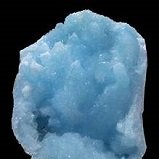
|
| Aragonites |
Aragonite has the same chemical composition as Calcite, but is less common and forms differently shaped crystals. One variety, known as flos feri, “flowers of iron,” makes intricate, coral or worm-like curling and curving branches. Other varieties form hexagonal or pseudo-hexagonal twinned prisms. Aragonite is a major constituent of pearls, shells, and the skeletal structure of marine creatures.
Aragonite is an excellent mediation stone, reminding us of the six-fold symmetry prevalent in nature. From the hexagonal cells of a beehive to the six petals on many flowers, it is an ideal contemplative stone for nature-minded people. Some aragonite aggregates radiate in prisms from a common center. This can suggest all sorts of natural progressions from singular to universal. Aragonite aids in centering, especially during times of stress and anger.
Aragonite, which has the same chemical formula as calcite, is a common carbonate mineral that is found in many parts of the world. It has a crystal structure that often results in specimens with very interesting shapes and colors — this makes it very popular with collectors. It is named after Aragon in Spain, where it was first discovered, but other notable sources include Morocco, several places in Europe, as well as the south-western United States. It is typically formed where there are voids between rocks — especially those which are volcanic — and is commonly associated with a large number of other minerals, such as gypsum, barite, dolomite, quartz, and so on.